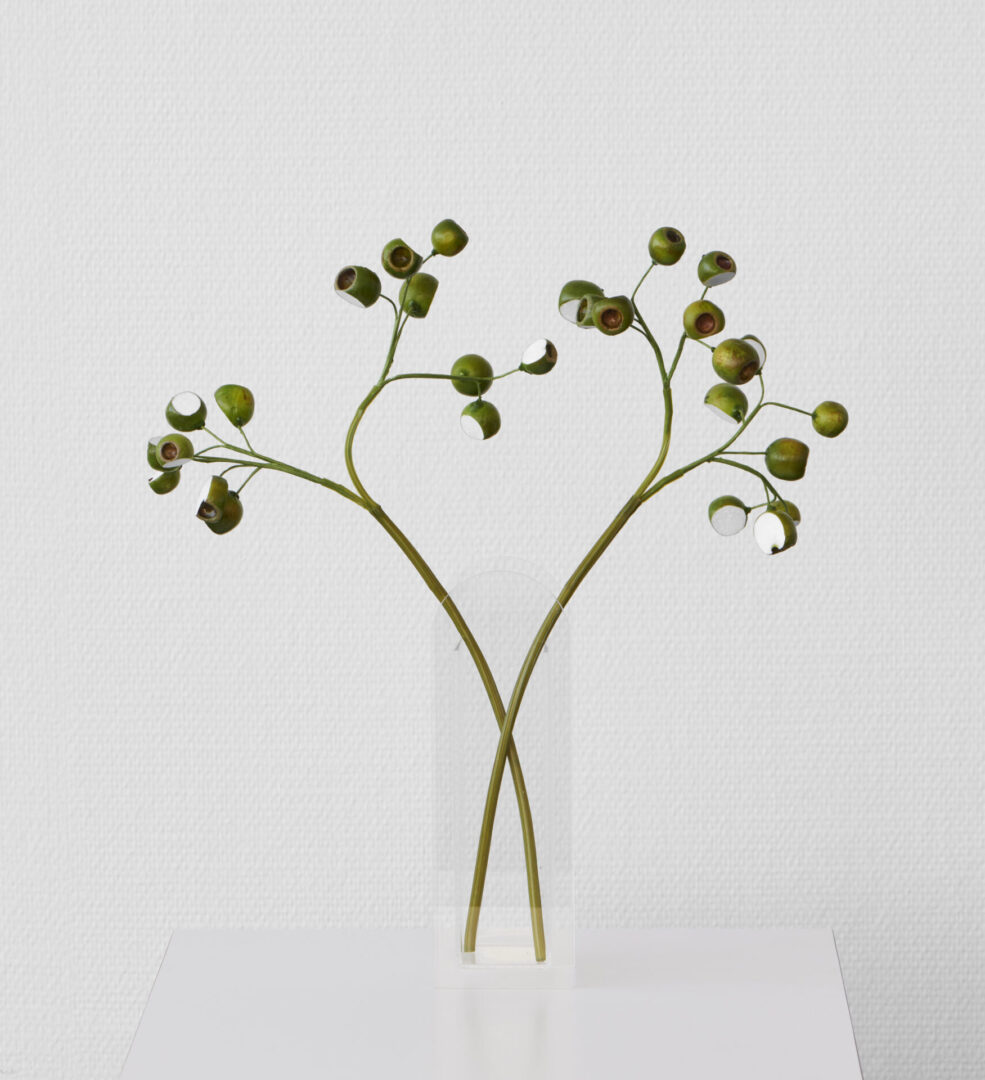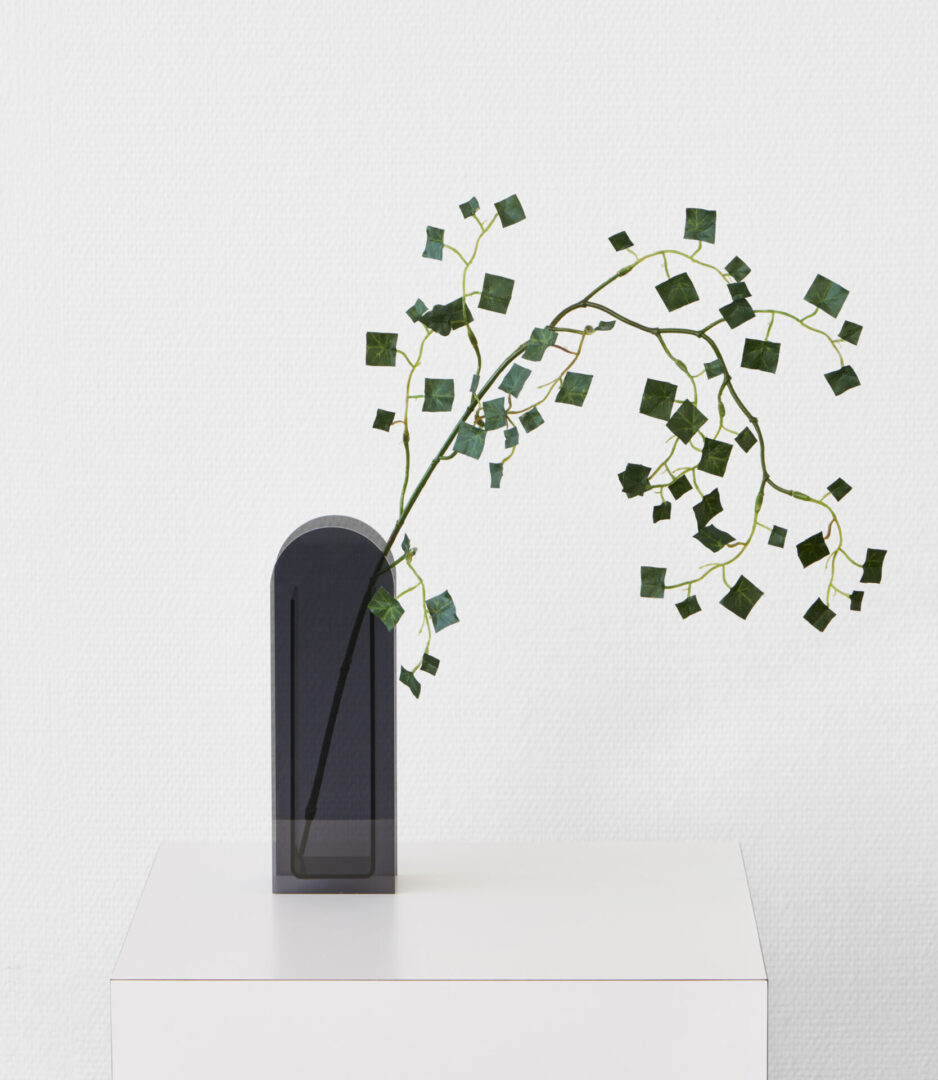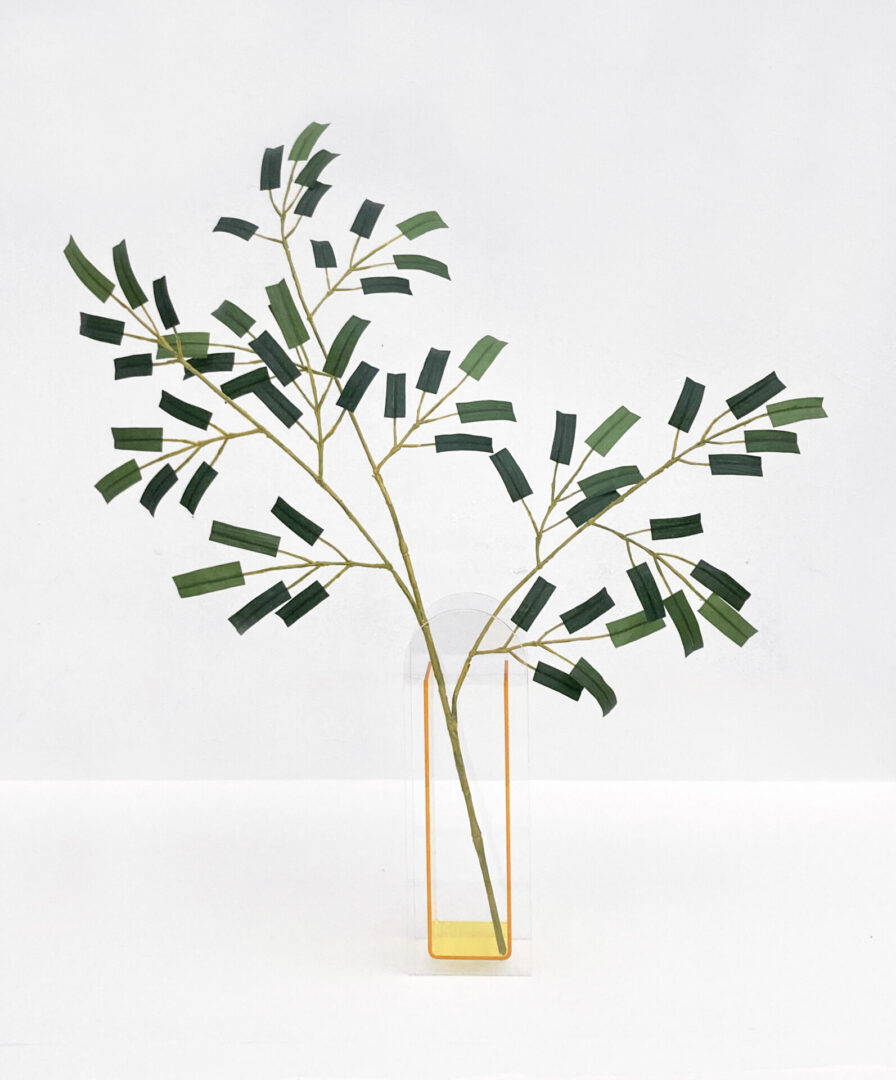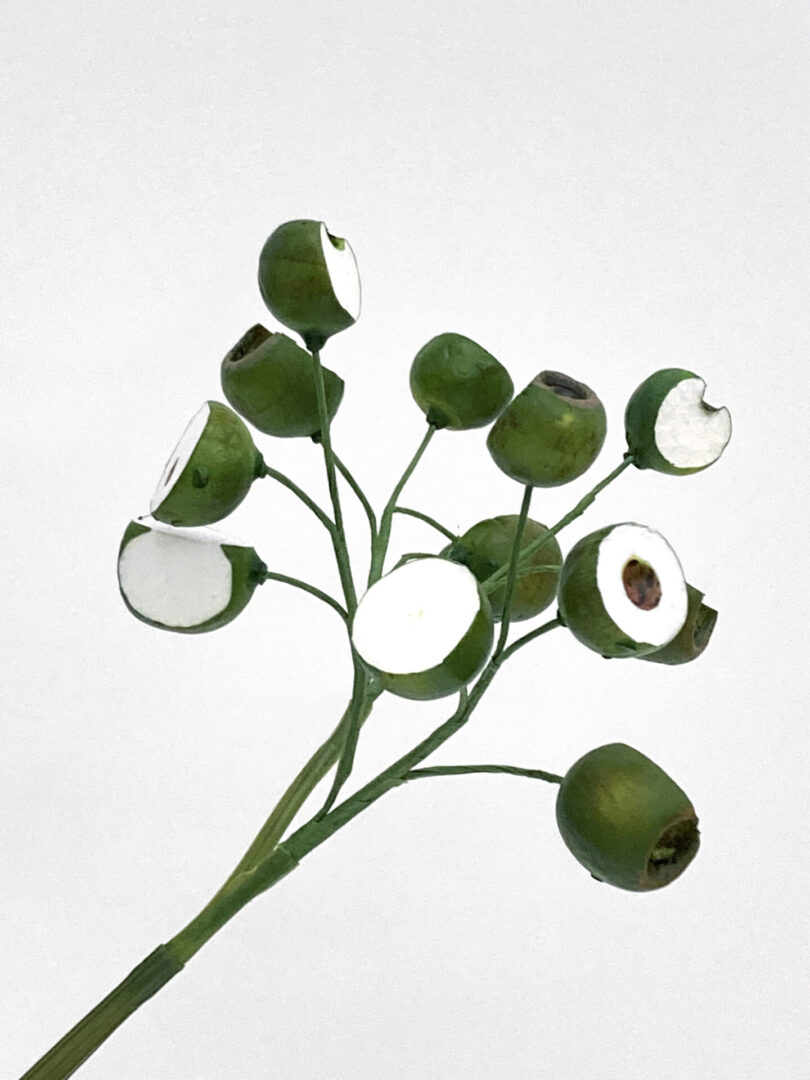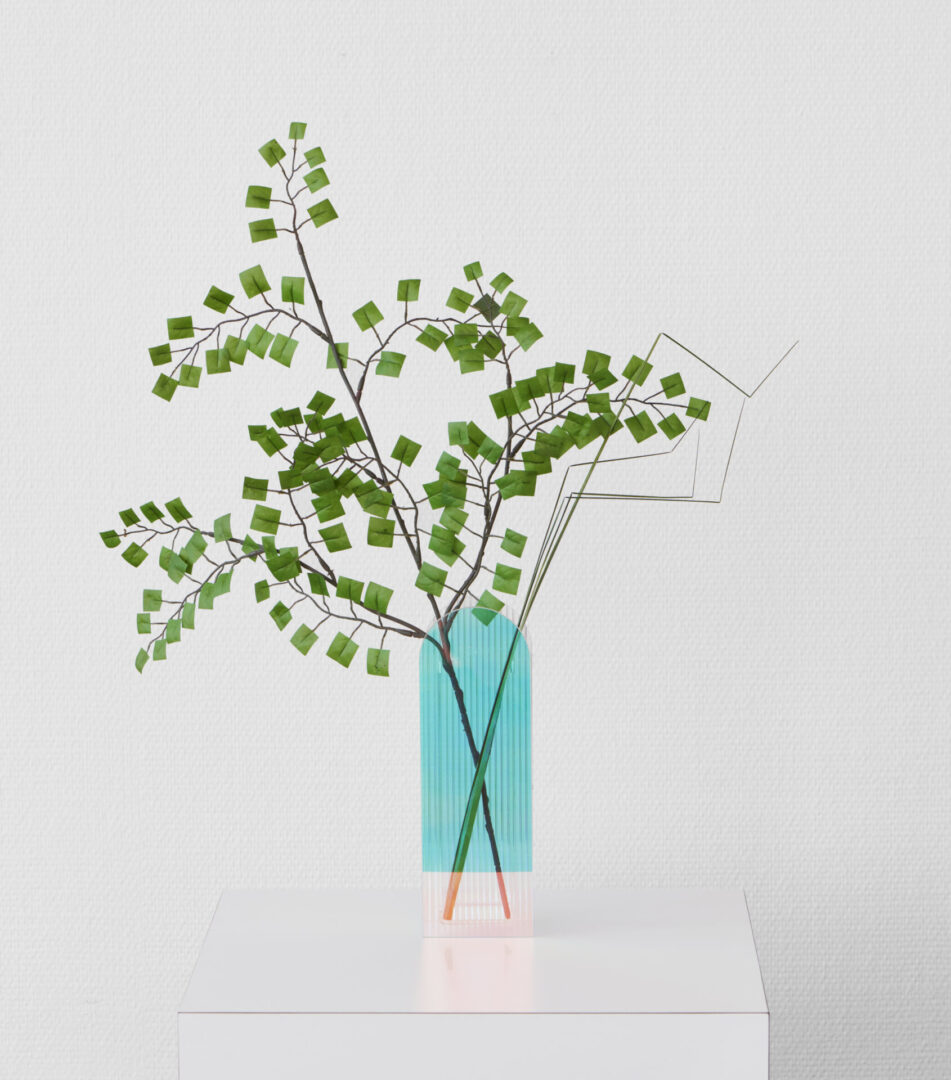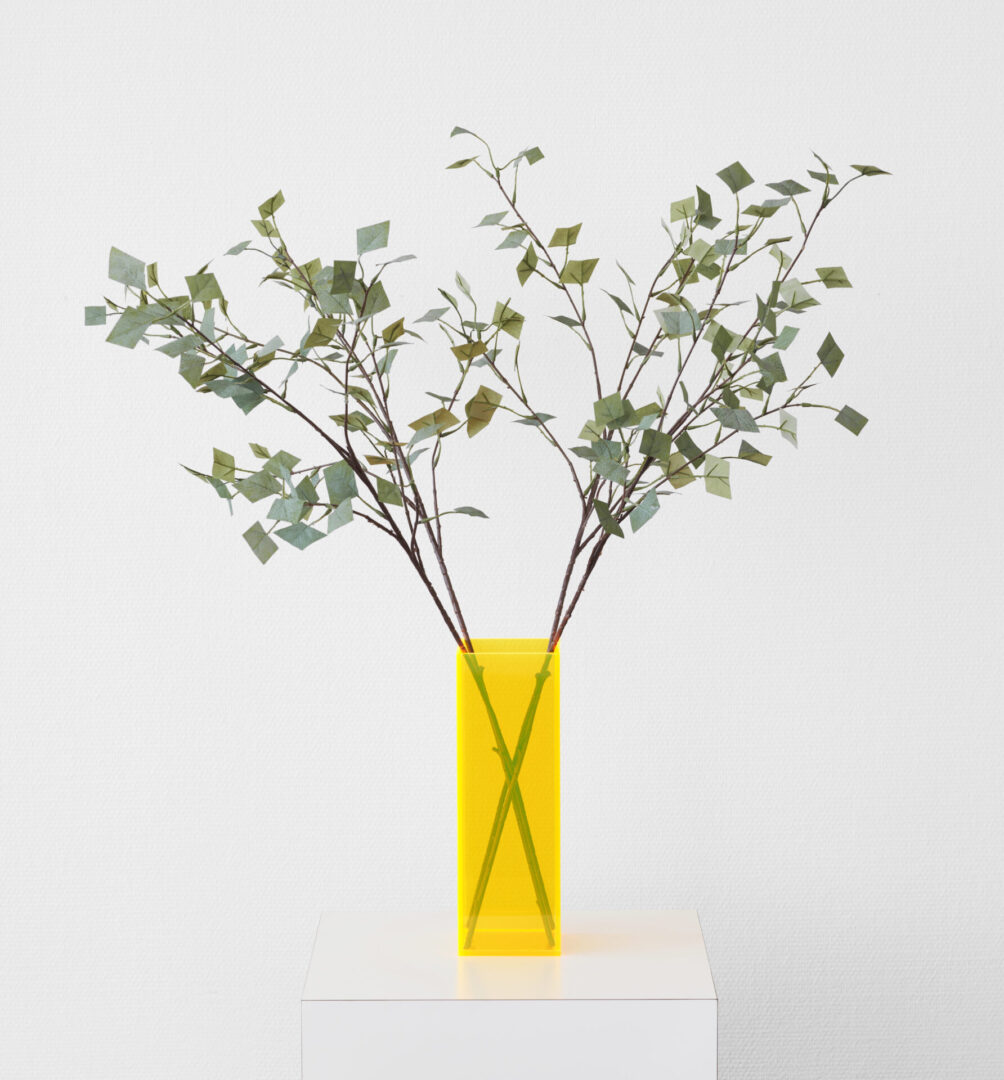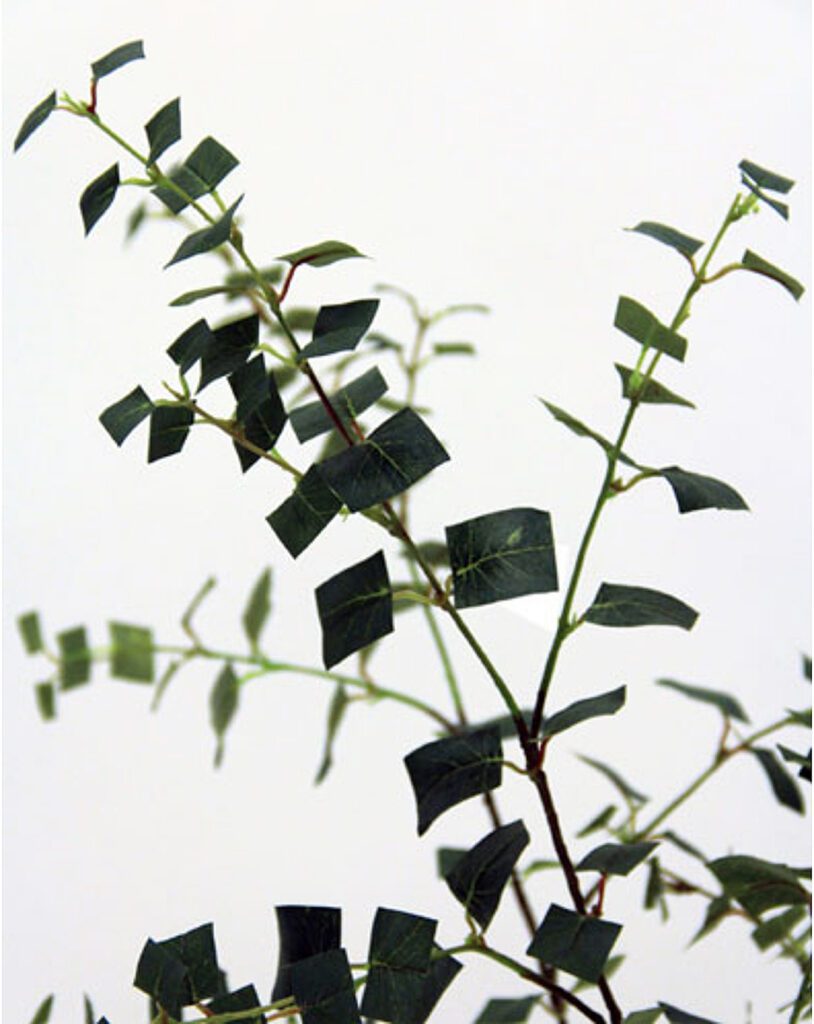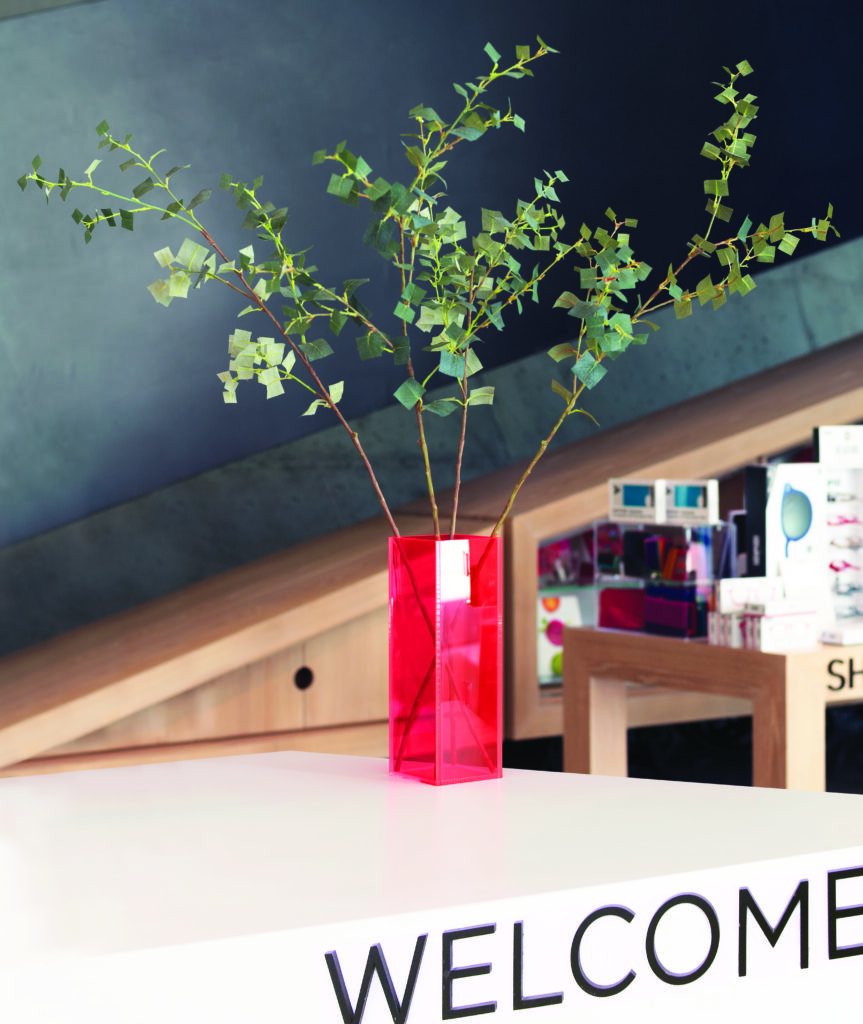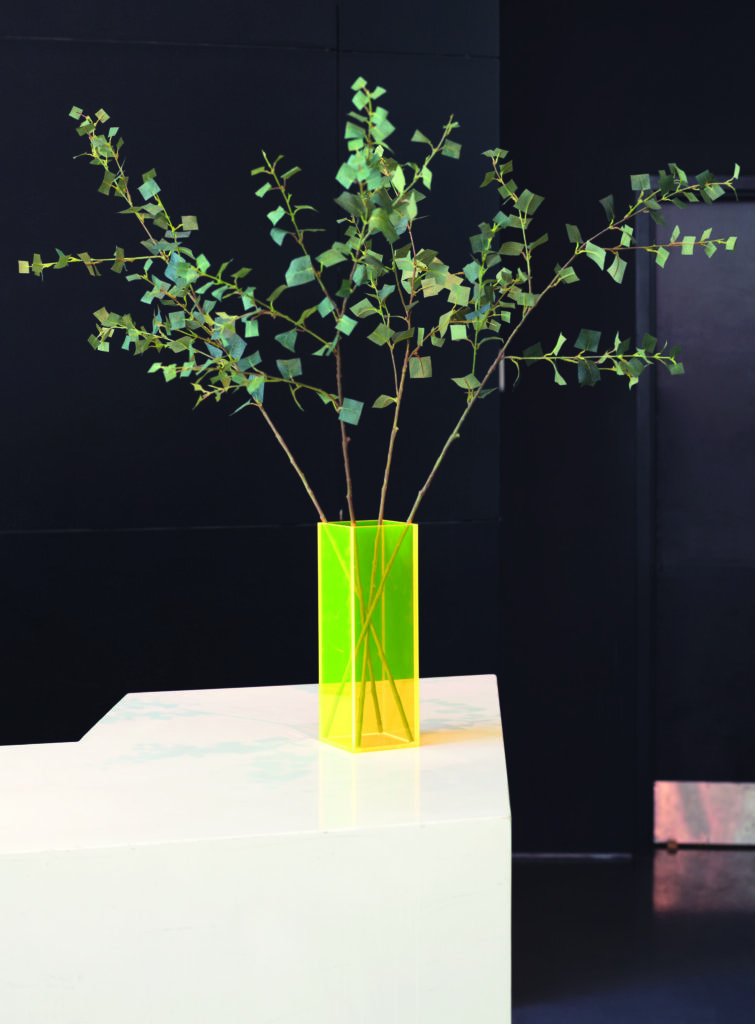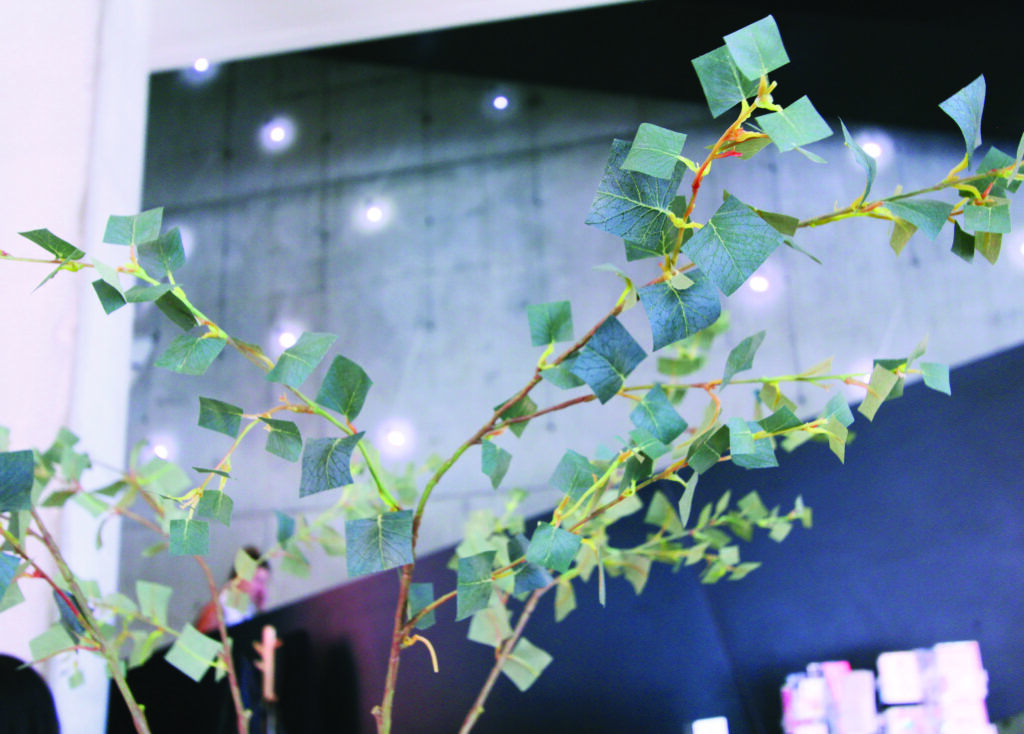Faux Faux (Eucalyptus fruit)
2022
hand-cut artificial plant and plexiglass
24,1 x 8 x 30 cm,
Ed. of 5 + 1AP
Faux Faux (Black Ruscus Square)
2022
hand-cut artificial plant and plexiglass
35 x 33 x 15 cm. 14 x 13 x 6
Ed. of 5 + 1AP
Faux Faux (Orange and Clear Bamboo)
2022
hand-cut artificial plant and plexiglass
55 x 8 x 24.1cm. 22 x 5 x 10 inches
Ed. of 5 + 1AP
Faux Faux (Florescent Orange Yellow II)
2022
hand-cut artificial plant and plexiglass
35 x 26 x 26 inches, 88.9 x 66 x 66 cm
Ed. of 5 + 1AP
Detail from Faux Faux (Eucalyptus fruit)
2022
hand-cut artificial plant and plexiglass
24,1 x 8 x 30 cm,
Ed. of 5 + 1AP
Faux Faux (Iridescent Button Leaf and Grass)
2022
hand-cut artificial plant and plexiglass
55 x 8 x 24.1cm. 22 x 5 x 10 inches
Ed. of 5 + 1AP
Faux Faux (Florescent Orange Yellow II)
2022
hand-cut artificial plant and plexiglass
35 x 26 x 26 inches, 88.9 x 66 x 66 cm.
Ed. of 5 + 1AP
Jane Benson is known for her interventions into found objects, literature and works of art reconfiguring them into questioning recompositions. In Re-Assembly, her current exhibition at Galerie PRISKA PASQUER, the artist explores a prevalent illusionist trend. You may have already noticed: artificial plants are in vogue. In the past, they were frowned upon, considered as bad taste par excellence. But today, copies decorate living rooms and offices appearing deceptively real. Only after repeated looking (and feeling) can the deception be revealed. Nature is not only represented, but imitated, whereby reality and fiction merge in such a way that they become indistinguishable.
In Re-Assembly, Benson puts the artificially created experience of the real to the test by transforming the gallery space into a minimal oasis. However, at second glance, the seemingly natural scenery reveals itself to be artificial in a double sense. The flora embeds itself too perfectly into the unnatural geometry of the rooms, casually and comically imitating the architectural environment of the gallery.
In her Faux-Faux series, Benson cancels the unification of reality and fiction that the artificial flora perfectly suggests by cutting the leaves into geometric, unnatural shapes such as triangles or squares. The process of transformation becomes visible, giving the mass-produced flora each its own individuality. Just as in nature, every detail becomes unique. No element is congruent anymore, creating a more “authentic” rendering of illusory nature by the artist.
A series of black and white prints complements the sculptural ensemble. The photographs document the silhouettes of the unabashedly fake flora. The images are reminiscent of photograms and Victorian silhouettes, which were created out of a desire for an economical, true-to-life image. Unlike photography, a photogram does not involve a camera, the light-sensitive paper is exposed directly, causing the uncovered areas of the paper to darken, thus, each image is unique. In mimicking the photogram, Benson’s photographs once again reinforce the game of masquerade and show that the perceptibility of the real is accompanied by a multitude of simulated gestures.
Side-stepping the cynical, Benson prods us into the absurdity of the false green and makes us look anew at culturally accepted objects and ideas. Benson both echoes and suggests an alternative to sociologist and philosopher Jean Baudrillard’s 1970s prediction of the indistinguishability of image and reality. Through the act of pretending, something is presented as given that does not exist that way. Against this backdrop, Benson makes the artificial plant world what it is: a new creation of reality.
Text: Dr. Wiebke Hahn
Faux Faux
Faux Faux The Faux Faux series are unabashedly fake flowers and plants. Each artificial leaf and petal of the fake leaves and flowers are cut into unnatural shapes, such as a triangle, square or rectangle.
www.paulacoopergallery.com/exhibitions/558
Happy Faux Flora, 2002
Vase O’ Faux Flora, 2002-5
